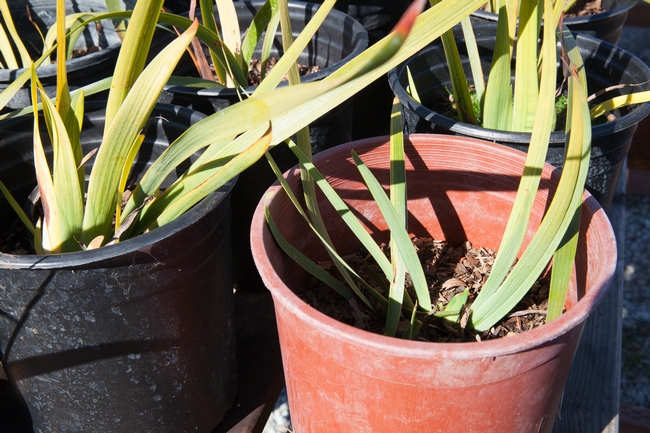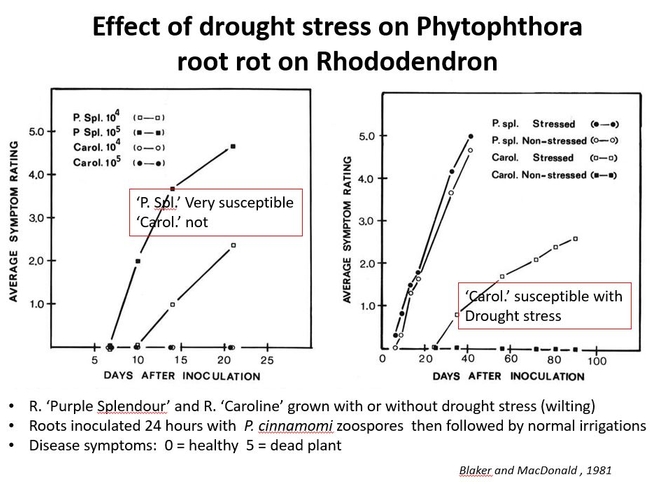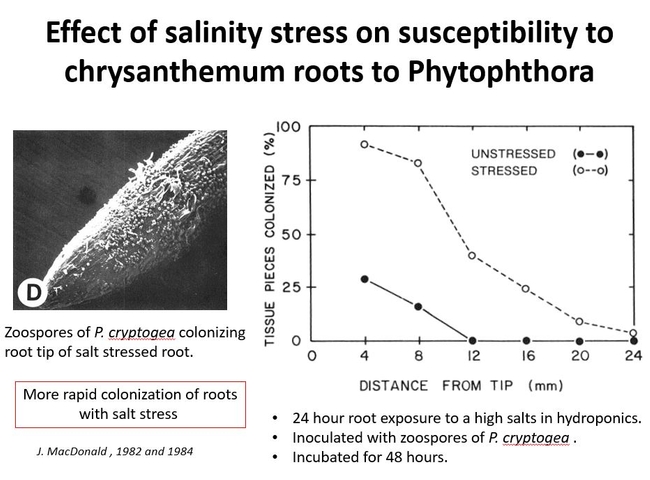In the previous post, I showed that soil air-filled porosity and flooding can affect the occurrence and severity of root rot. There are some other related factors that can affect root rot too. Soil settling can occur for various reasons and can reduce air- filled porosity. Soil settling or “shrinkage” of the soil volume can occur when organic soil components naturally decompose. The most vulnerable to fast decomposition are incompletely composted wood products. They can break down resulting in smaller particles that fill air spaces. The soil settles. This all results in a loss of air-filled porosity. The total soil volume of the soil is reduced too, resulting in less total water-holding capacity and the need for more frequent irrigations. Container soils with organic components such as peat and coir are more stable and not prone to shrinkage.
The effect of drought stress on Phytophthora root rot has been studied on two rhododendron cultivars, ‘Purple Splendor' (a very susceptible cultivar) and ‘Caroline' (less susceptible cultivar). For each cultivar, a group of plants were selected and the soil was dried to the point that the plants started to wilt. The roots of this group and a group of non-stressed plants were then inoculated with P. cinnamomi zoospores and then followed with normal irrigations. Disease symptoms were observed for over 80 days. “Purple Splendor' was very susceptible in both the drought- stressed and non- stressed condition, while the less susceptible ‘ Caroline' was only susceptible in the drought- stressed condition. So, a relatively resistant cultivar such as ‘Caroline' became predisposed to Phytophthora root rot when it was subjected to drought stress. Fig 2.
Other stresses to roots might also affect susceptibility to Phytophthora. Soil salinity stress was studied on chrysanthemum roots. Chrysanthemum roots were exposed to high mineral salts in hydroponics for 24 hours. After 48 hours it was found that those roots that were exposed to high salinity became more colonized by Phytophthora cryptogea. Fig 3.
Salinity stresses might be more common than you think. Salts in the soil become more concentrated as water is removed by plant uptake. Of course, if soils are inadvertently dried too much (as the example above with drought), salts concentrate greatly in the soil solution. The over- application of a topical fertilizer or an inadvertent spike of liquid fertilizers from a poorly functioning fertilizer injector could cause high salinity in the soil solution, resulting in the plant's predisposition to root rots.
Next: Available water and irrigation


